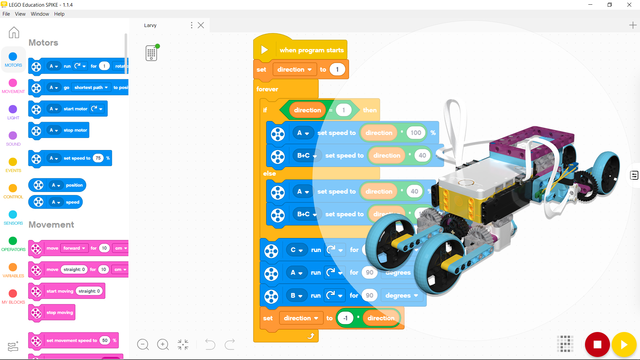
Robotics with LEGO - Level Pi (Pre-release)
The third level of the Robotics with LEGO curriculum for students in from 10 to 12 years old.
Learn how the Color sensor works. Your robots can do different behaviours, after checking specific conditions. Robots can become fast speed cars or heavy lifting cranes by the means of gear-trains.
(CourseBook is still available only in Bulgarian)
- 7
- 0:00
- 67












